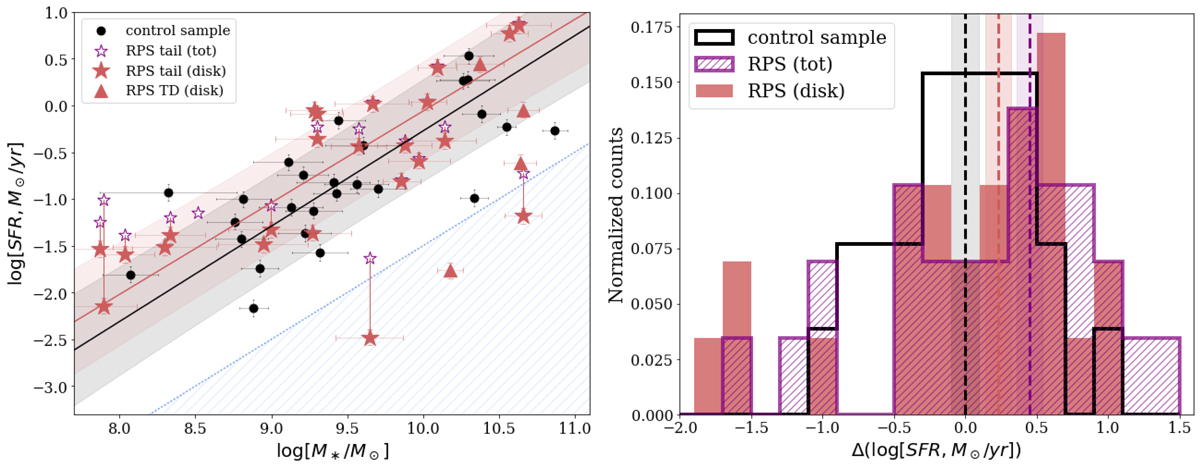Fig. 2.

Download original image
Comparison between the star-forming properties of ram-pressure-stripped and undisturbed galaxies. Left: SFR–mass relation for ram-pressure-stripped galaxies (stars) and control sample galaxies (black circles). For ram-pressure-stripped galaxies, filled red symbols refer to the SFR measured within the disk, and empty purple symbols refer to the total SFR (disk+tail). Stars represent ram-pressure-stripped galaxies with ionized tails, and triangles show truncated disks. For each ram-pressure-stripped galaxy, the disk and total SFRs are connected by a line. If no empty star is plotted, this means that the total and disk SFRs are comparable (hence the tail SFR is negligible). The black line and shaded gray regions show the best fit and 1σ uncertainties for the control sample, while the red line and shaded red regions show the best fit and 1σ uncertainties for the ram-pressure-stripped sample when the SFRdisk is considered. The best fit obtained considering the total SFR is not shown for the sake of clarity. Best-fit values are reported in Table 2. The dashed blue region indicates the plane where sSFRdisk < 10−11.5 yr−1. Right: distributions of the differences between the galaxy SFRs and their expected value according to the fit to the control sample, given their mass. Vertical lines and shaded areas show the mean values of the distributions along with uncertainties. Black and gray colors refer to the control sample, and red (purple) colors show the values for the ram-pressure-stripped galaxies when the SFR in the disk (tot) is considered.
Current usage metrics show cumulative count of Article Views (full-text article views including HTML views, PDF and ePub downloads, according to the available data) and Abstracts Views on Vision4Press platform.
Data correspond to usage on the plateform after 2015. The current usage metrics is available 48-96 hours after online publication and is updated daily on week days.
Initial download of the metrics may take a while.


